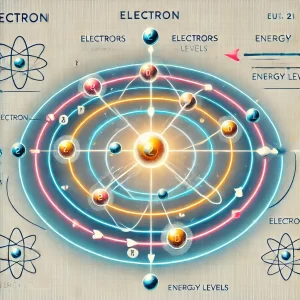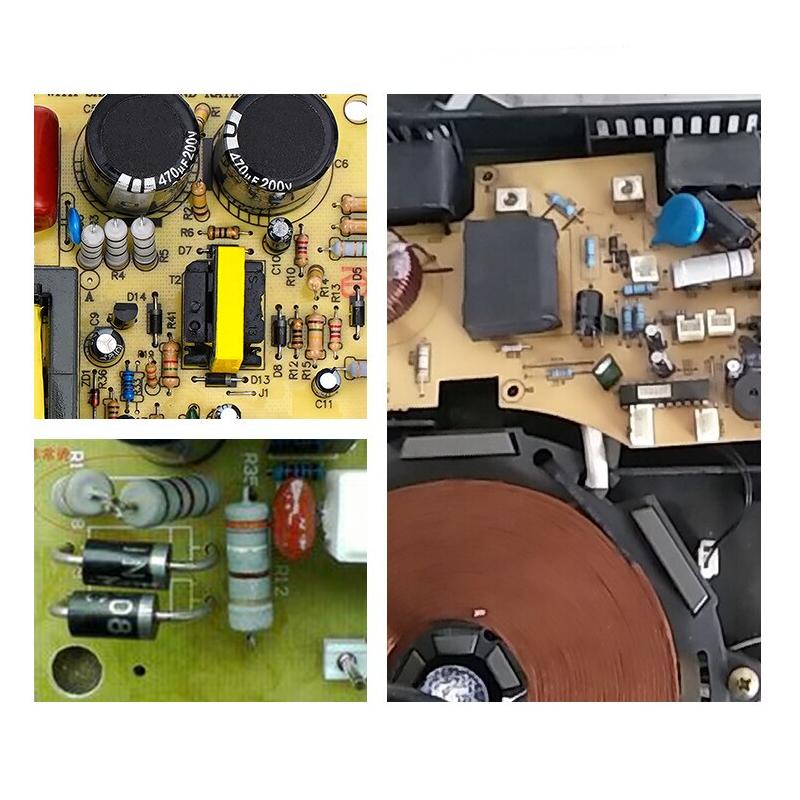Let's Learn Electronics
How Electronics Work
How Electronics Work
A Comprehensive Overview of Electronic Principles and Applications
Electronics have revolutionized the way we conduct our day-to-day activities. From smartphones and laptops to electronic gadgets for healthcare or aviation, electronics have become integral to our lives. Electronic circuits have become the lifeline of almost all the electrical appliances we use today. Owing to that, there is a growing interest in people to know exactly how electronics work, even in super-compact size. So, if you also want to grab the basic concepts of electronics and electronic circuits, then this blog is for you. This blog presents a detailed discussion of how electronics work, starting from the basic concepts of the movement of electrons to how electronics are changing our everyday lives.
What is the Electric Charge or Electricity?
The first concept that should be cleared is about what exactly is the electric charge or electricity. Basically, electric charge is the building block of electricity that comes in two types, i.e., positive and negative. The positive charges are associated with protons, located in the atom’s nucleus, while negative charges are associated with electrons, which orbit the nucleus.
The electric charge occurs when an atom’s number of protons and electrons differs. The atom has a positive charge when protons are more in number than electrons. Similarly, the atom has a negative charge when electrons are more in number than protons. The unit of electric charge is the Coulomb (C).
Electricity is the flow of electric charge. Since electrons are negatively charged particles that orbit the nucleus, their movement creates electrical current or electricity. For example, suppose a few electrons move away from the atom of object X to the atom of object Z. In that case, object X becomes positively charged due to more protons, and object Z becomes negatively charged due to more electrons. This flow of electric charge results in the generation of electricity. The flow of electrical charge is measured in amperes (A), while the potential difference between two points in a circuit is measured in volts (V).
How do Electrons Move?

The movement of electrons is the core of any electrical circuit. When a voltage is applied to a conductor, it creates an electric field. The electric field causes a force on electrons and makes them move in the direction of the electric field. Electrons flow from the source (battery or power supply) through a conductor (wire) to the load (such as a motor, bulb, or other loads), where the electrical energy is converted into another form of energy, such as motion/light. Lastly, the electrons reach back to the source to complete the circuit.
Talking specifically about electronic circuits, the movement of electrons is what drives electric current and powers all the components in an electronic circuit, making the circuit provide the required outputs. In short, the movement of electrons is the heart of electronics.
What is an Electrical Circuit, and How does it Work?
Before diving deep into electronic circuits, it’s important to clarify our concepts around what is an electrical circuit and its working principle.
An electrical circuit is an arrangement of the conductive path for the movement of electricity or electric charge. The best example of an electrical circuit is an electrical wiring system in our homes.
To make an electric circuit work, there is a need for a conductive path through which electrons can flow with a push from the power source. Since metals are good conductors of electricity, the conductive path is made of thin metal wire. The power source in an electrical circuit can be a battery, power supply, or home wiring.
Let’s consider the example of a light bulb to understand the working principle of an electrical circuit. When a power source through a battery or home wire is applied, the electric field makes electrons flow from the source through the light bulb and back to the other end of the source. During this flow, the wire in the light bulb gets super-hot and emits light.
What is an Electronic Circuit?
An electronic circuit is again the arrangement of the conductive path for the movement of electric charge, but this time the path also includes other electronic components to control the flow of electric charge and get the desired output. The best example of an electronic circuit is a printed circuit board (PCB). You will find electronic circuits in most of your daily use equipment, such as smartphones, TVs, laptops, etc.
The Elements of an Electronic Circuit
The number of components and the complexity of the electronic circuit depends on its application. However, there are three main elements in an electronic circuit, as follows:
- Voltage Source
The voltage source is a two-terminal device, such as a power supply, battery, or generator, that delivers the potential difference (voltage) between two points in the electronic circuit for the electric charge to flow through it. The electric current flows through one terminal of the voltage source, passes through the conductive path, and reaches the other terminal.
- Conductive Path
For the electric current to flow in the electronic circuit and interact with other components and load, there is a need for a conductive path. In an electrical circuit, copper wires serve as the conductive path. However, the electronic circuit replaces it with conductive traces. Conductive traces are copper sheets that are laminated onto a substrate of a non-conductive property. For example, the lines in a printed circuit board (PCB) are the conductive path.
- Load
The load is a consuming element of an electronic circuit that consumes the power to deliver a specific function. In an electric circuit, the load can be an electric bulb, while the load in an electronic circuit can be a resistor, capacitor, transistor, relay, etc. The load is scattered across the electronic circuit to serve different purposes and is linked with the conductive path.
The above three elements of the electronic circuit make up the whole circuit in most cases.
Components of an Electronic Circuit
An electronic circuit comprises many components that work together to perform a specific function. Below are the main components of an electronic circuit:
- Resistor
Resistor is the most common and simplest component you will find in all electronic circuits. As the name implies, a resistor resists the current that flows through it. The working principle of a resistor is similar to a water pipe. So, if the flow of the current is to be controlled at a desired level, then the resistor will be used.
- Capacitor
Capacitor is another two-terminal component that can store electric energy in the form of an electric field. Think of it as a small rechargeable battery that can store electricity but can charge and discharge in seconds. It is made of two conductive plates with an insulator between them. It allows the AC signal and blocks the DC signal. It is also used to stabilize voltage and power flow.
- Inductor
An inductor, also known as an AC resistor, stores electrical energy in its magnetic field. It mostly consists of an insulated wire trapped in a coil. It allows the DC signal and blocks the AC signal. It is often used to choke, filter, smooth, or block high-frequency noise in circuits. Since inductors are difficult to incorporate in circuits due to their large size, they are not used in basic electronic circuits.
- Transistor
Transistor is an important component in an electronic circuit. It is a three terminals semiconductor device that is often used as a switch and amplifier device. Mostly, it is used to build complex circuits. To help better understand the transistor, consider a manual switch as an example. A manual switch has two outputs, on and off. However, the transistor acts as a more advanced switch with multiple outputs. Unlike manual input, the state of a transistor can only change when a current runs through it. This way, the current flow can control the output state, making the transistor serve as an advanced switch or amplifier.
- Diode
Diode has two terminals, i.e., an anode and a cathode, and allows the current to flow in only one direction. It is used to either rectify AC signals to DC signals or to protect other components from the reverse polarity.
- Integrated Circuit (IC)
An integrated circuit (IC) is a special component that incorporates thousands of resistors, transistors, diodes, and other components in a micro silicon chip. ICs have become core electronic components for building all modern electronic devices, such as smartphones, laptops, aircraft systems, etc.
- Sensors
Sensors are special components that detect environmental changes and convert them into electrical signals. They are used to trigger specific functions in an autonomous way when a specific condition is met.
- LED
Light Emitting Diode (LED) is a light source that emits light when a current passes through it. It is used for displays, indication, or lighting in electronic circuits.
All these components are configured in different ways to create simple to complex electronic circuits for different applications.
How Electronics Work In A Circuit?
Now that we know all the basics about the electronic circuit, including its key elements and components, let’s now discuss how an electronic circuit works.
Printed Circuit Boards (PCBs) are the main base in an electronic circuit on which all the components and conductive traces are placed. PCBs composition involves an insulating material flat sheet and a substrate laminated copper foil layer. The copper is divided into separate conductive lines or traces through chemical etching. All the components are placed and soldered on the PCB using a manual or automated assembly machine.
Once the design is completed, the power source is applied at the input terminals of the electronic circuit, which passes through the conductive traces, interacts with the components, and delivers the required output from the output terminals. Overall, the components’ arrangement and the electronic circuit’s complexity can vary for different applications.
How Electronics is Changing Our Everyday Lives
Over the past two decades, advancements in the electronics sector have skyrocketed. In fact, we have come to the point where it looks impossible to imagine a life without the use of electronic gadgets. Electronics has influenced all aspects of our day-to-day lives, from communication and connectivity to transportation and healthcare. Below are some of the ways electronics are changing our everyday lives:
- Communication: Electronics have transformed the way we interact with each other. The emergence of smartphones, portable tablets, fast routers, and similar other equipment has transformed the communication industry.
- Healthcare: The advancements in electronics is making way for more advanced healthcare equipment and services. For example, digital x-ray equipment provides better quality x-ray results with reduced exposure to radiation compared to film-based x-rays. Similarly, wearable devices can help physicians get real-time health data of patients.
- Smart Home Appliances: The concept of smart homes and smart appliances is becoming more and more popular. Amazon Alexa, Google Assistant, smart plugs, smart bulbs, smart vacuums, and many more are a few examples of emerging smart home appliances.
- Transportation: Electronics are transforming the transportation industry. EVs and self-driving cars are becoming popular thanks to the advancements in electronics.
- Entertainment and Gaming: Electronics have made entertainment and gaming a whole new experience. The development of powerful processes, strong computing devices, VR headsets, and many more are making entertainment more immersive and accessible to people.
Other than the above sectors, you can find the application of electronics in almost all other sectors. In short, the advancements in electronics have brought significant change in our lives and will continue due to their ever-evolving nature.
Wrapping Up
Technological advancements have made electronics more accessible and valuable in our daily lives. Therefore, understanding the basics of electronics is essential for anyone who wants to dive deep into the world of electronics and wants to explore new opportunities for innovation and development in this field. Overall, electronics and technology go hand-in-hand, so we are likely to see many new, innovative applications of electronics in the years to come.

